Mad Hedge Biotech and Healthcare Letter
July 27, 2023
Fiat Lux
Featured Trade:
(INVESTING IN NECESSITIES)
(KVUE), (JNJ), (HLN), (GSK), (KO)
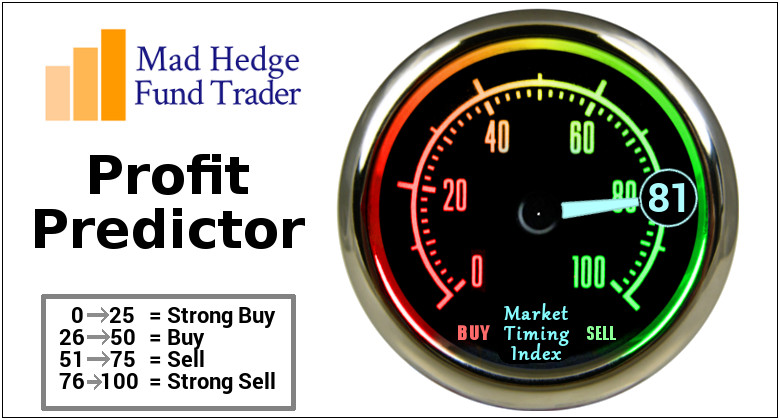
Mad Hedge Biotech and Healthcare Letter
July 27, 2023
Fiat Lux
Featured Trade:
(INVESTING IN NECESSITIES)
(KVUE), (JNJ), (HLN), (GSK), (KO)

Everyone knows that Warren Buffett was schooled by the one and only Benjamin Graham. His game was easy-peasy early on — he hunted for dirt-cheap companies in relation to their assets, snagged them, and played the waiting game until the market woke up and realized their true worth. This was the good old 'cigar butt' investing.
It took Charlie Munger, Buffett's partner-in-crime, to shake things up. Munger nudged Buffett to eye high-quality companies with a thick competitive buffer that could weather long stretches of time.
Now with Johnson & Johnson's (JNJ) recent spinoff of Kenvue (KVUE), it seems the investment gods have dished up just the kind of opportunity Munger and Buffett would drool over.
JNJ is rolling out a red carpet, enticing its investors to trade their shares for most of its stake in Kenvue, the consumer division it made public in May.
If you're invested in JNJ, consider looking into this proposition. We're talking about a potential $35 billion transaction. Actually, JNJ is practically dangling a carrot, offering its holders $107 in Kenvue stock for every $100 in JNJ stock, capped, of course.
Basically, the JNJ deal lets holders swap all, some, or zip of their shares for Kenvue. It's a limited-time offer, expiring on August 18, with the price nailed down between August 14 to 16.
Interestingly, the Big Pharma company opted to play the game of 'voluntary exchange offer,' or 'split-off' in Wall Street jargon. A bit more elusive than your garden-variety spinoff, but trust me, it has its charm.
Why, you ask? This method tends to tighten the share count, beefing up the earnings per share.
And here's the sweetener: split-offs usually come with perks. The parent company tends to sprinkle a little discount magic for investors who decide to trade their old shares for the shiny new spinoff ones.
So, what could investors expect from Kenvue?
When it comes to its financial muscle, Kenvue's flexing a robust $20 billion in equity. The balance sheet displays a formidable $35 billion in assets squaring off against a $15 billion debt.
The first quarter has set the pace, projecting an annual revenue run rate of a cool $15.2 billion, and the operating cash flow isn't too shabby either, clocking in at $3.2 billion.
Kenvue's market valuation stands around 18 times its forecasted earnings for 2023, yielding a sweet 3.4%. That's a smidge more than J&J's yield of 2.8%.
Sure, Kenvue may not be sprinting in the high-growth lane — with earnings growth likely to pace in the mid-single digits post-2023 — but it holds a rock-solid portfolio of consumer health brands we've all grown to trust. Bonus? It trades at a discount compared to its closest peer, Haleon (HLN), GlaxoSmithKline’s (GSK) spinoff company.
Kenvue boasts a roster of brand-name products that people can't live without, and this constant demand spells nothing but growth. This spinoff is the proud holder of household names like Tylenol, Listerine, and Band-Aid.
In essence, Kenvue comes off as a Warren Buffett-type business that's up for grabs at a seemingly bargain price.
Consider for a moment why Buffett is so cozy with his long-standing stake in Coca-Cola (KO). Coke quenches the world's thirst with its myriad beverages, winning over brand loyalty and securing repeat purchases like it's a walk in the park.
My investment angle on Kenvue draws a parallel here, with a twist: Kenvue's products are absolute necessities, not just something you treat yourself to. That fact alone makes it even more appealing to me.
The company also disclosed a promising earnings range of $1.26 to $1.31 per share, with sales growth itching to hit a respectable 5%. The cherry on top? They're starting a quarterly dividend at 20 cents a share.
Now, you might be wary of growth prospects stagnating – let's face it, there's a limit to how many Band-Aids and Tylenol a household will need, right?
But here's where the plot thickens: the fine folks over at healthcare firm IQVIA (IQV) made quite the compelling argument that the over-the-counter drug market is expected to grow by a hearty 6.1% until 2025.
With a product lineup that's nothing short of a hit with consumers, a sturdy financial standing, and a rosy outlook for growth in the market it caters to, Kenvue is shaping up to be quite the catch for investors.
Of course, there are possible risks, such as a looming recession prompting even the most brand-loyal customers to opt for generic alternatives or management falling short on growth plans. That said, these potential drawbacks are dwarfed by the massive upsides of investing in Kenvue.
I think it's about time you give Kenvue some serious thought.
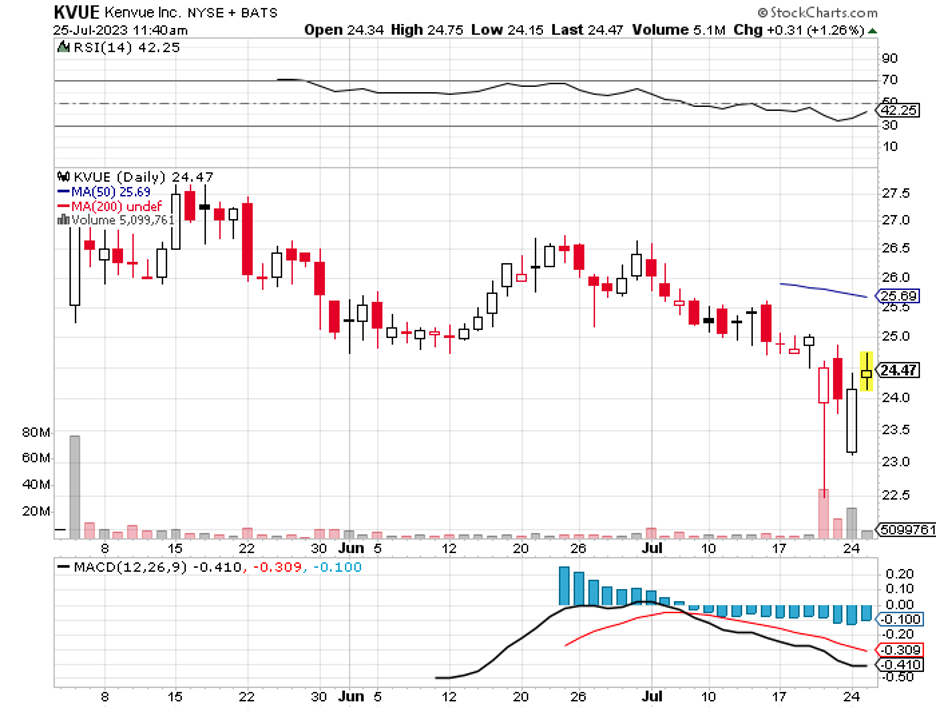
Global Market Comments
March 22, 2023
Fiat Lux
Featured Trade:
(THE MAD HEDGE TRADERS & INVESTORS SUMMIT VIDEOS ARE UP!)
(THE BARBELL PLAY WITH BERKSHIRE HATHAWAY),
(BRKA), (BRKA), (BAC), (KO), (AXP), (VZ), (BK) (USB), (TLT), (AAPL), (MRK), (ABBV), (CVX), (GM), (PCC), (BNSF)
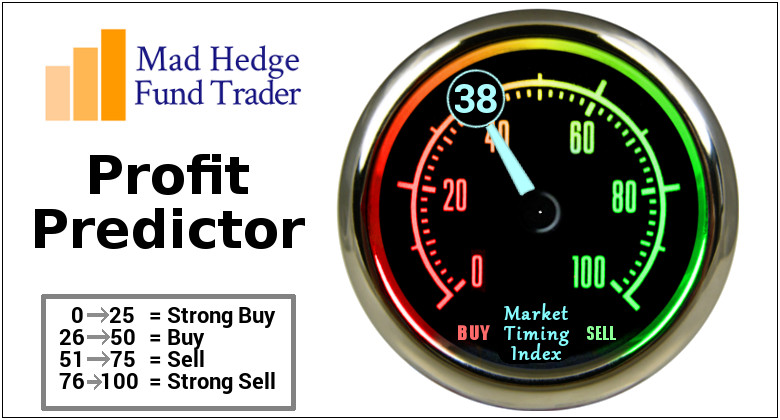
CLICK HERE to download today's position sheet.
Global Market Comments
March 2, 2023
Fiat Lux
Featured Trade:
(TOUCHING BASE WITH WARREN BUFFET),
(BRK/B), (AMEX), (KO), (MS), (TSLA)
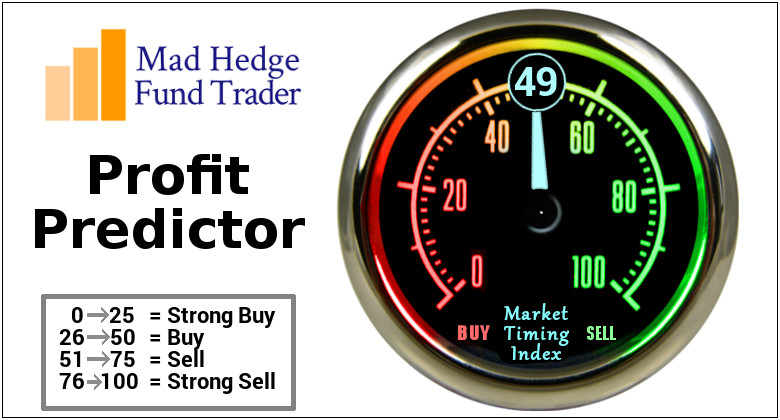
CLICK HERE to download today's position sheet.
So how does someone with 55 years of investment experience like me learn something new? Listen to someone with 80 years of experience.
It is with great anticipation that I read Warren Buffett’s annual letter to shareholders. Having banged the table for decades that his Berkshire Hathaway (BRK/B) is a “must own” stock, keeping up with the 92-year-old Oracle of Omaha” is essential.
Besides, Warren was one of the founding subscribers to The Diary of a Mad Hedge Fund Trader 15 years ago.
I’ll give you the high points.
Berkshire companies took in a record $30.8 billion in operating profits in 2022, producing a net 3% gain in the share price.
Sounds like a deal to me!
Buffett describes himself as a business picker, not a stock picker. Over time, the great businesses prosper and compound, while the poor ones fail. The flowers bloom and the weeds wither away.
One need look no further than the Dow Average, where NO stocks were able to stay in the index over the last 100 years because of business failures. (Corn Products Refining Company? Woolworth’s? Union Carbide?). This is known as “creative destruction,” which moves capital out of the past and into the future.
“Efficient” markets exist only in textbooks, their day-to-day behavior “baffling” and only understood in retrospect.
In the ultimate act of humility, Buffet confesses to only making a dozen good decisions in his life. Coca Cola (KO) was one of those. His initial investment of $1.3 billion in 1994 is now worth $25 billion and now spins off an annual dividend of $700 million.
American Express (AXP) is the same, the initial 1995 investment of $1.3 billion is now worth $22 billion, paying $302 billion a year in dividends. Over the same time frame, an investment in 30-years bonds yielded nothing.
Warren makes the case for share buybacks, which he regularly executes whenever (BRK/B) trades at a discount. When the share count goes down, the shareholders’ ownership of the businesses goes up. This is how Berkshire created many $100 millionaires over the years.
Buffet also makes his annual case for the “Great American Tailwind.” In Buffet’s 80 years of investing, he has only seen it becalmed occasionally and briefly. Never bet against America.
Buffet started his investing career in April of 1942. Unknown to him, the US was about to win the Battle of Midway. Stocks bottomed and launched a torrid 20-year run, even though the public was unaware of the victory for three more months. It’s proof that markets see things before we mere mortals do.
As for me, I suppose I have to be even more humble than Warren Buffet, for I have only made four good investment decisions in 50 years. I agreed to accept a job offer from The Economist magazine in London, kicking off a half-century of intensive research. I took a big pay cut to go to work for Morgan Stanley (MS), which rewarded me with pre-IPO stock at book value of 25 cents a share. I bought Apple (AAPL) at $2 when Steve Jobs returned to run the company on the edge of bankruptcy. I bought Tesla (TSLA) at a split-adjusted $2.35 a share in 2010, completely buying into Elon Musk’s 30-year vision.
I only have to live another 17 years to see if he was right.
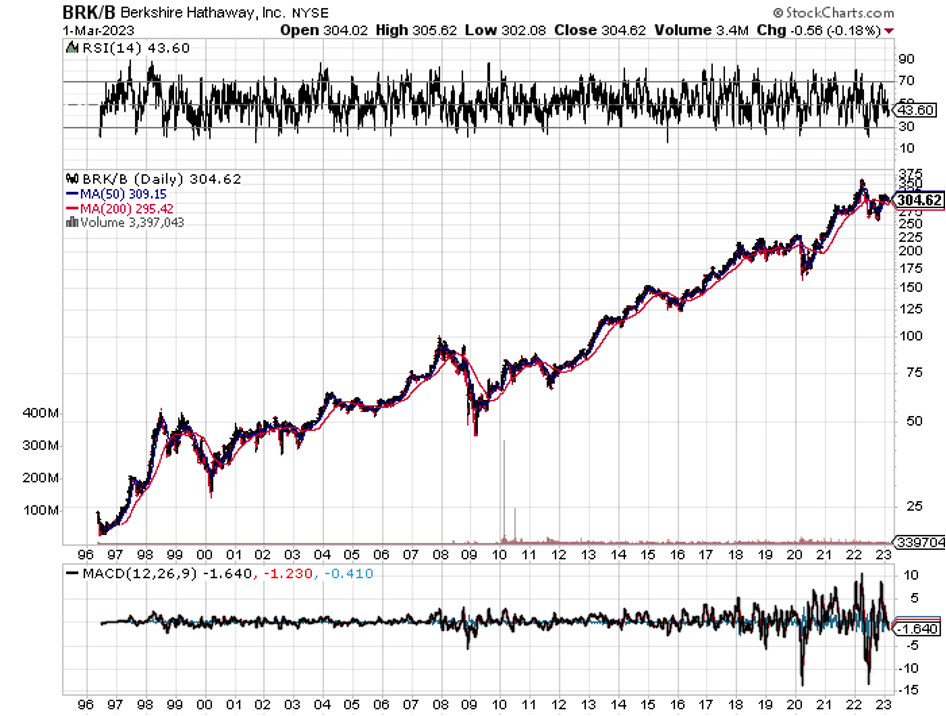
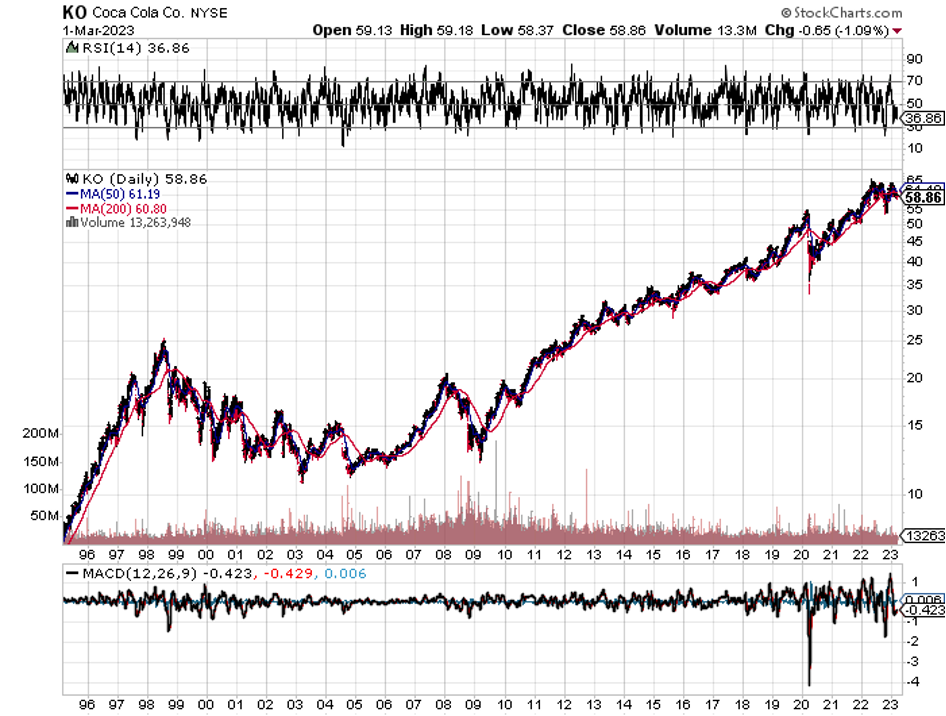

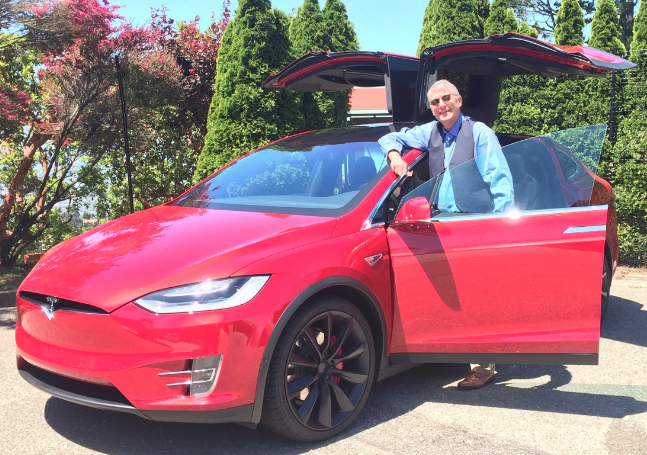
It Only Took Four Good Decisions
Global Market Comments
October 19, 2022
Fiat Lux
Featured Trade:
(THE BARBELL PLAY WITH BERKSHIRE HATHAWAY),
(BRKA), (BRKA), (BAC), (KO), (AXP), (VZ), (BK) (USB),
(MRK), (ABBV), (CVX), (GM), (PCC), (BNSF), (TLT), (AAPL)

Global Market Comments
August 15, 2022
Fiat Lux
Featured Trade:
(MARKET OUTLOOK FOR THE WEEK AHEAD,
or WHAT THE MARKET IS REALLY DISCOUNTING NOW),
(SPY), (TLT), (AAPL), (AXP), (KO), (XOM). (TBT), (SNOW), (NFLX), (ARKK), (ETHE),
(NLR), (CCR), CORN), (WEAT), (SOYB), (DBA), (UUP), (FXA), (FXC), (BA), (TSLA)
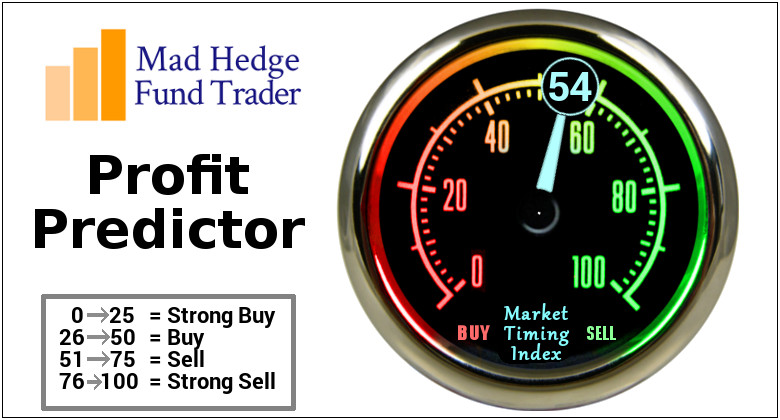
After a half-century in the markets, I have noticed that it is the investors with the correct long-term views who make the biggest money. My favorite example is my friend, Warren Buffet, who doesn’t care if an investment turns good in five minutes or five years.
Buffet’s Berkshire Hathaway (BRKB) is the largest outside investor in Apple (AAPL). And guess what his cost has been? By the time you add up the compounded dividends he has collected since he started buying the stock in 2011, it's zero. The value today? $15.5 billion.
Buffet didn’t buy Apple for its hardware, iPhone, or iTunes. He bought it for the brand, which has improved astronomically. Look at Berkshire’s portfolio and it is packed with brands, like American Express (AXP), Coca-Cola (KO), and Exxon (XOM).
When did Buffet last buy Apple? In May when it hit $130.
That’s why Warren Buffet is Warren Buffet and you are you.
While the inflation news last week has been great and it is likely to get better, I believe that investors are missing the bigger, more important long-term picture.
The fact is that markets are now discounting an earlier than expected end to the Ukraine War, much earlier.
I get constant updates on the war from the Joint Chiefs of Staff, Britain’s Defense Committee, and NATO headquarters and I can tell you that the war has taken a dramatic turn in Ukraine’s favor just in the last two weeks.
Russian casualties have topped 80,000, nearly half the standing army. They have lost 2,200 of their 2,800 operational tanks. Some 120 front line aircraft have been destroyed. This week, Ukraine attacked the principal Russian air base in Crimea, leaving the smoking ruins of seven more aircraft there.
Russia is in effect fighting a modern digitized war with 50-year-old Cold War weapons and it isn’t working. Its generals have no experience fighting wars against determined opposition. Putin would do better listening to the retired generals on CNN for military advice.
America’s High HIMARS (the M142 High Mobility Artillery Rocket System) has become the Stinger missile of this war. The Lockheed Martin (LMT) factory in Camden, Arkansas that makes these missiles is running 24/7 on doubled orders.
The sanctions against Russia have been wildly successful. The Russian economy is utterly collapsing. What oil they are selling now is at half price. Aircraft are being cannibalized for parts to keep others flying. Much of the educated middle class has fled the country. Draft dodging is rampant.
What does all this mean for you and me?
The commodity price spike the war prompted has ended and most are now in steep downtrends. Gold (GLD), where the Russians were major buyers, has been flat as a pancake. This has put our inflation numbers into freefall. Interest rate fears peaked in June and are now in the rear-view mirror.
As is always the case, markets have seen these developments and correctly ascertained their consequences far before we humans did (except for maybe me). It has been no surprise that they have been tracking the Russian defeat day by day and have been on an absolute tear since June 15.
Even small techs suffering 18-month bear markets have now begun major recoveries, with companies like Snowflake (SNOW), up 50%, Netflix (NFLX), up 39%, and Cathie Wood’s Innovation Fund (ARKK) up 57%. Even crypto has returned from the grave, with Ethereum (ETHE) up an eye-popping 105%.
But don’t go gaga over stocks just yet.
The Fed ramps up quantitative tightening in September to $95 billion a month and will deliver another interest rate hike. That's why I am running a double short in the bond market (TLT), (TBT) once again.
We also have the midterms to worry about which, with recent developments, promise to be more contentious than ever. Look for another round of tiring new election fraud claims.
That’s great because these events will give us good entry points lower down for trade alerts, not the short-term top we are looking at right now.
It helps that with ten-year US Treasury yields at 2.80%, it has an effective price earning multiple of 37, while stocks growing earnings at 10% a year boast a price earnings multiple of only 16. That sets up a massive, long stock/short bond trade which Mad Hedge will be pushing well on into 2023.
And you know what?
The smart guys I know in the hedge fund community are starting to model for the next Fed interest rate CUT. Markets will love it and discount this far in advance.
If you want to get on the train with me before it leaves the station, just keep reading this newsletter.
Yes, markets are now being driven by rate cuts and peace prospects, not rate rises and war!
Your retirement fund will love it.
I just thought you’d like to know.
CPI Dives to 8.5%, down 0.6% in July. The peak is in, and stocks rallied 500. Look for another drop in August, with gasoline prices falling daily. The 800-pound gorilla in the room has exited.
The Producer Price Index Dives 0.5%, confirming last week’s weak CPI number. And many core prices are indicating that we will get another drop when the August numbers are reported in September. It was worth another 300-point rally in the Dow Average, which is getting seriously overbought.
Consumer Inflation Expectations dive to 6.2% for the coming year and only 3.2% for three years. according to a New York Fed Survey. Expectations for food costs saw the largest decline. The CPI is out on Wednesday. No doubt a media onslaught over a coming recession has a lot to do with it.
Elon Musk Sells $6.9 billion worth of Tesla (TSLA) Stock, explaining the $100 drop in the shares last week. Ostensibly, this is to pay for Twitter if he loses his court case. Musk clearing took advantage of a 60% rise in (TSLA) to head off distress sales in the future. Musk also opened the door to share buy backs in the future. Buy (TSLA) on dips.
85,000 IRS Agents are Headed Your Way, but only if the government can hire them and only if you are a billionaire or a profitable large oil company. The rest of us will be ignored by this unpublicized portion of the Biden inflation bill.
US Dollar (UUP) Takes a Hit on CPI Report, which effectively showed that the US saw deflation in July. The greenback is pulling back the 20-year highs which gave you the cheapest European vacation in your lives. The prospect of interest rates rising at a slower pace is dollar negative. Buy (FXA) and (FXC) on dips.
Boeing (BA) Delivered its First 787 Dreamliner in a year, after long-awaited regulatory approval. The monster 30% rise in the shares off the June low predicted as much. A global aircraft shortage helps. Airbus is going to have to start earnings its money again. Keep buying (BA) on dips.
Weekly Jobless Claims Pop 12,000 to 262,000, a new high for the year. It’s not at concerning levels yet but is definitely headed in the wrong direction. Maybe it’s just a summer slowdown? Maybe not.
Shipping Container Charges are Plunging Everywhere, except in the US, which currently has the world’s strongest economy. It’s a sign that global supply chain problems are easing. But the US leads the world in demurrage, or delays, with New York the worst, followed by Long Beach.
Import Prices are Plunging, thanks to a super strong dollar, taking more pressure off of inflation. They fell 1.4% in July according to the Department of Labor. Easing supply chain problems are helping. Biden has had the run of the table for months now
My Ten-Year View
When we come out the other side of pandemic and the recession, we will be perfectly poised to launch into my new American Golden Age, or the next Roaring Twenties. With oil prices now rapidly declining, and technology hyper accelerating, there will be no reason not to. The Dow Average will rise by 800% to 240,000 or more in the coming decade. The America coming out the other side will be far more efficient and profitable than the old. Dow 240,000 here we come!
My August performance climbed to +2.14%. My 2022 year-to-date performance ballooned to +56.97%, a new high. The Dow Average is down -7.0% so far in 2022. It is the greatest outperformance on an index since Mad Hedge Fund Trader started 14 years ago. My trailing one-year return maintains a sky-high 74.76%.
That brings my 14-year total return to 569.53%, some 2.56 times the S&P 500 (SPX) over the same period and a new all-time high. My average annualized return has ratcheted up to 44.96%, easily the highest in the industry.
We need to keep an eye on the number of US Coronavirus cases at 93 million, up 300,000 in a week and deaths topping 1,037,000 and have only increased by 2,000 in the past week. You can find the data here.
On Monday, August 15 at 8:30 AM EDT, the New York Empire State Manufacturing Index for August is released.
On Tuesday, August 16 at 8:30 AM, the Housing Starts for July are out.
On Wednesday, August 17 at 8:30 AM, Retail Sales for July are published. At 11:00 AM the Fed Minutes from the last meeting are printed.
On Thursday, August 18 at 8:30 AM, Weekly Jobless Claims are announced. Existing Home Sales for July are announced.
On Friday, August 19 at 2:00 the Baker Hughes Oil Rig Count is out.
As for me, while we’re all waiting for the dog days of August to end, it is time to reminisce about my old friend George Schultz who passed away last year at the age of 101.
My friend was having a hard time finding someone to attend a reception who was knowledgeable about financial markets, White House intrigue, international politics, and nuclear weapons.
I asked who was coming. She said Reagan’s Treasury Secretary George Shultz. I said I’d be there wearing my darkest suit, cleanest shirt, and would be on my best behavior, to boot.
It was a rare opportunity to grill a high-level official on a range of top-secret issues that I would have killed for during my days as a journalist for The Economist magazine. I guess arms control is not exactly a hot button issue these days.
I moved in for the kill.
I have known George Shultz for decades, back when he was the CEO of the San Francisco-based heavy engineering company, Bechtel Corp in the 1970s.
I saluted him as “Captain Schultz”, his WWII Marine Corp rank, which has been our inside joke for years. Now that I am a major, I guess I outrank him.
Since the Marine Corps didn’t know what to do with a PhD in economics from MIT, they put him in charge of an anti-aircraft unit in the South Pacific, as he was already familiar with ballistics, trajectories, and apogees.
I asked him why Reagan was so obsessed with Nicaragua, and if he really believed that if we didn’t fight them there, would we be fighting them in the streets of Los Angeles as the then-president claimed.
He replied that the socialist regime had granted the Soviets bases for listening posts that would be used to monitor US West Coast military movements in exchange for free arms supplies. Closing those bases was the true motivation for the entire Nicaragua policy.
To his credit, George was the only senior official to threaten resignation when he learned of the Iran-contra scandal.
I asked his reaction when he met Soviet premier Mikhail Gorbachev in Reykjavik in 1986 when he proposed total nuclear disarmament.
Shultz said he knew the breakthrough was coming because the KGB analyzed a Reagan speech in which he had made just such a proposal.
Reagan had in fact pursued this as a lifetime goal, wanting to return the world to the pre nuclear age he knew in the 1930s, although he never mentioned this in any election campaign. Reagan didn’t mention a lot of things.
As a result of the Reykjavik Treaty, the number of nuclear warheads in the world has dropped from 70,000 to under 10,000. The Soviets then sold their excess plutonium to the US, which has generated 20% of the total US electric power generation for two decades.
Shultz argued that nuclear weapons were not all they were cracked up to be. Despite the US being armed to the teeth, they did nothing to stop the invasions of Korea, Hungary, Vietnam, Afghanistan, and Kuwait.
Schultz told me that the world has been far closer to an accidental Armageddon than people realize.
Twice during his term as Secretary of State, he was awoken in the middle of the night by officers at the NORAD early warning system in Colorado to be told that there were 200 nuclear missiles inbound from the Soviet Union.
He was given five minutes to recommend to the president to launch a counterstrike. Four minutes later, they called back to tell him that there were no missiles, that it was just a computer glitch projecting ghost images on a screen.
When the US bombed Belgrade in 1989, Russian president Boris Yeltsin, in a drunken rage, ordered a full-scale nuclear alert, which would have triggered an immediate American counter-response. Fortunately, his generals ignored him.
I told Schultz that I doubted Iran had the depth of engineering talent needed to run a full-scale nuclear program of any substance.
He said that aid from North Korea and past contributions from the AQ Khan network in Pakistan had helped them address this shortfall.
Ever in search of the profitable trade, I asked Schultz if there was an opportunity in nuclear plays, like the Market Vectors Uranium and Nuclear Energy ETF (NLR) and Cameco Corp. (CCR), that have been severely beaten down by the Fukushima nuclear disaster.
He said there definitely was. In fact, he was personally going to lead efforts to restart the moribund US nuclear industry. The key here is to promote 5th generation technology that uses small, modular designs, and alternative low-risk fuels like thorium.
Schultz believed that the most likely nuclear war will occur between India and Pakistan. Islamic terrorists are planning another attack on Mumbai. This time, India will retaliate by invading Pakistan. The Pakistanis plan on wiping out this army by dropping an atomic bomb on their own territory, not expecting retaliation in kind.
But India will escalate and go nuclear too. Over 100 million would die from the initial exchange. But when you add in unforeseen factors, like the broader environmental effects and crop failures (CORN), (WEAT), (SOYB), (DBA), that number could rise to 1-2 billion. This could happen as early as 2023.
Schultz argued that further arms control talks with the Russians could be tough. They value these weapons more than we do because that’s all they have left.
Schultz delivered a stunner in telling me that Warren Buffet had contributed $50 million of his own money to enhance security at nuclear power plants in emerging markets.
I hadn’t heard that.
As the event ended, I returned to Secretary Shultz to grill him some more about the details of the Reykjavik conference held some 36 years ago.
He responded with incredible detail about names, numbers, and negotiating postures. I then asked him how old he was. He said he was 100.
I responded, “I want to be like you when I grow up”.
He answered that I was “a promising young man.” I took that as encouragement in the extreme.
Stay healthy,
John Thomas
CEO & Publisher
The Diary of a Mad Hedge Fund Trader

We’re Getting Pretty High
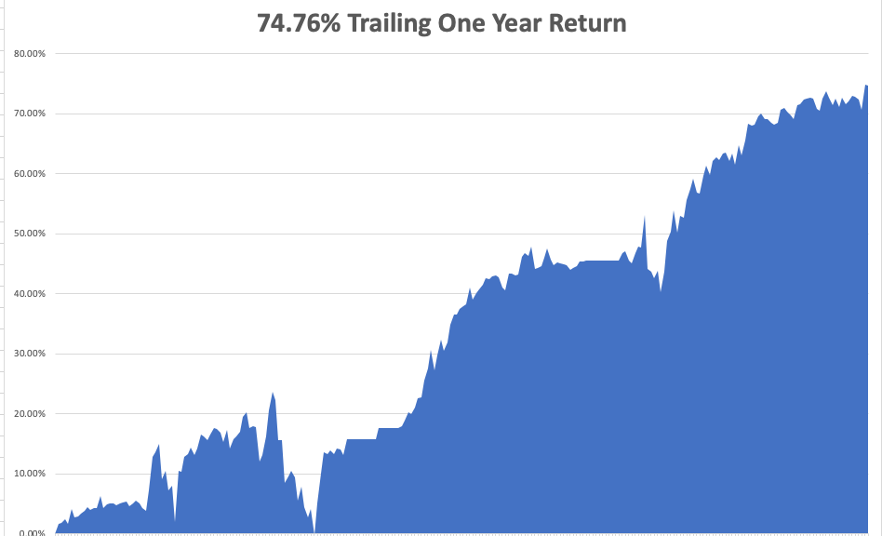
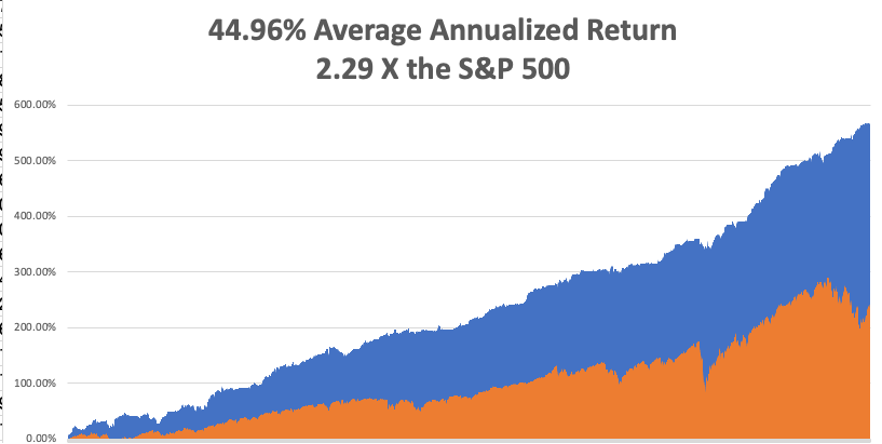
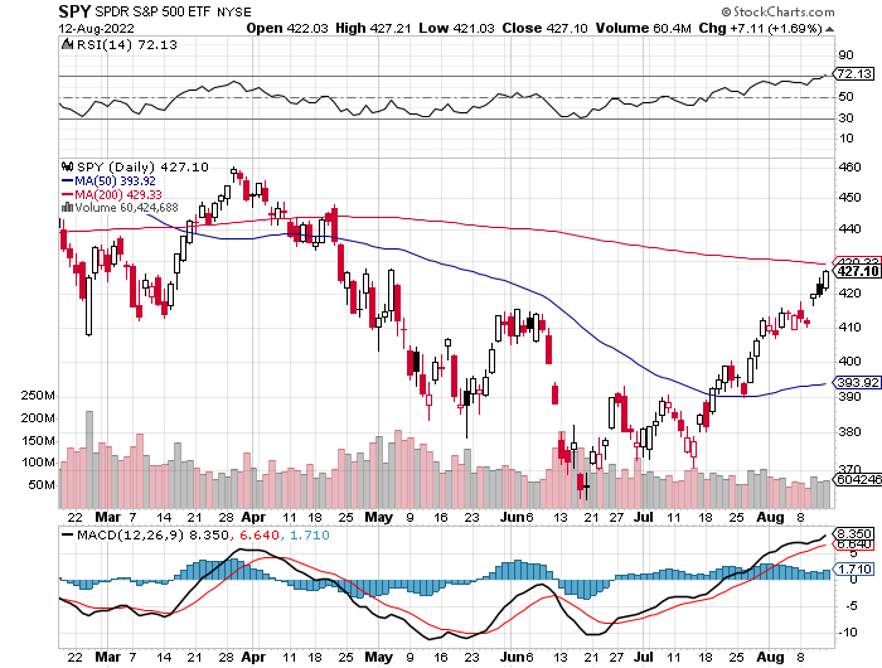
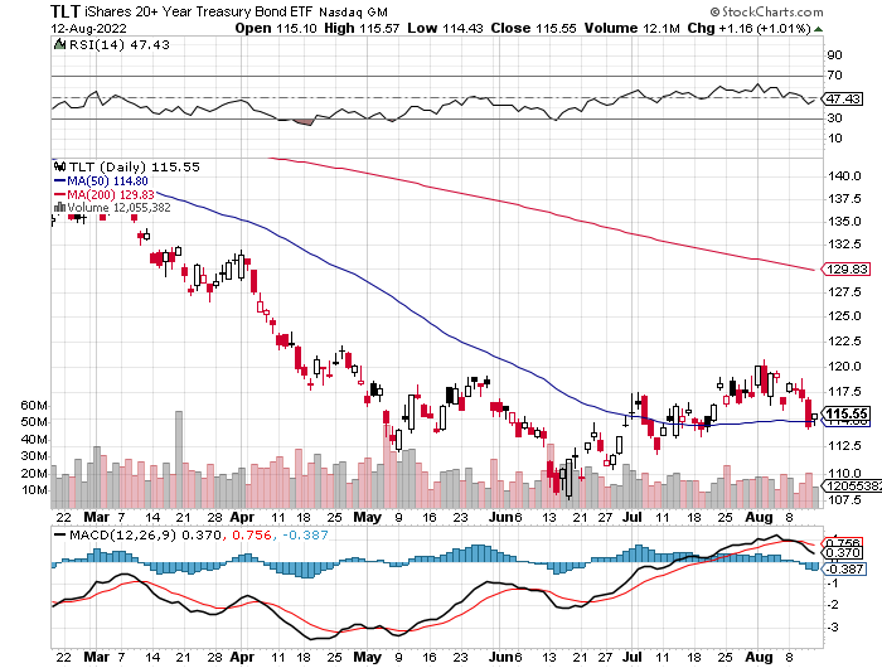
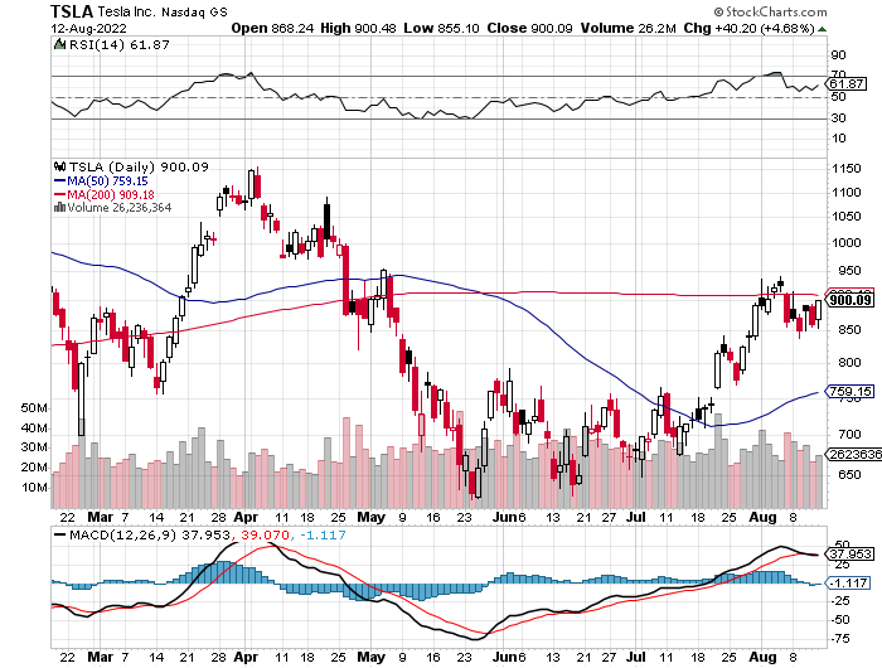
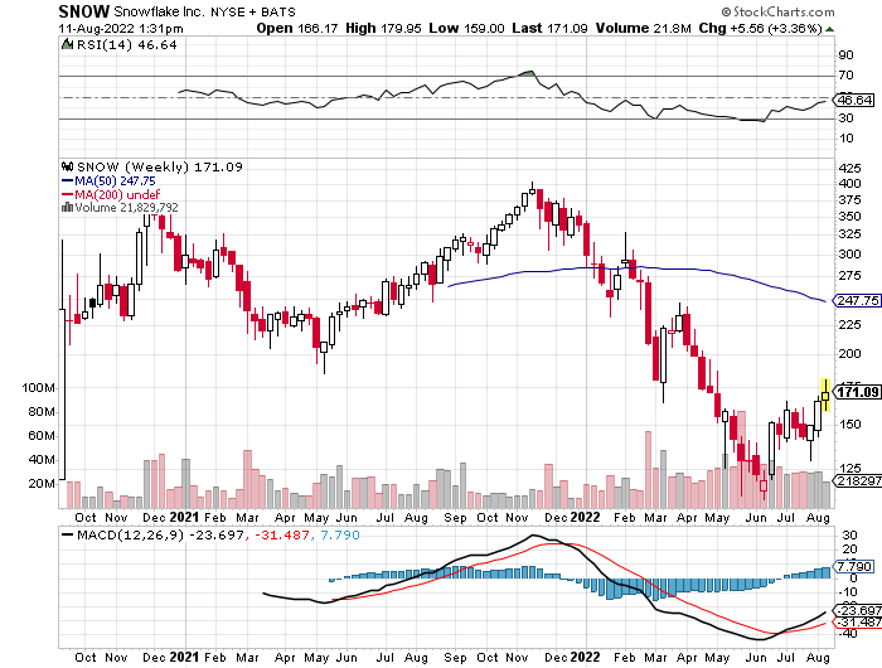
Global Market Comments
January 11, 2022
Fiat Lux
Featured Trades:
(THE BARBELL PLAY WITH BERKSHIRE HATHAWAY),
(BRKA), (BRKA), (BAC), (KO), (AXP), (VZ), (BK) (USB), (TLT), (AAPL), (MRK), (ABBV), (CVX), (GM), (PCC), (BNSF)
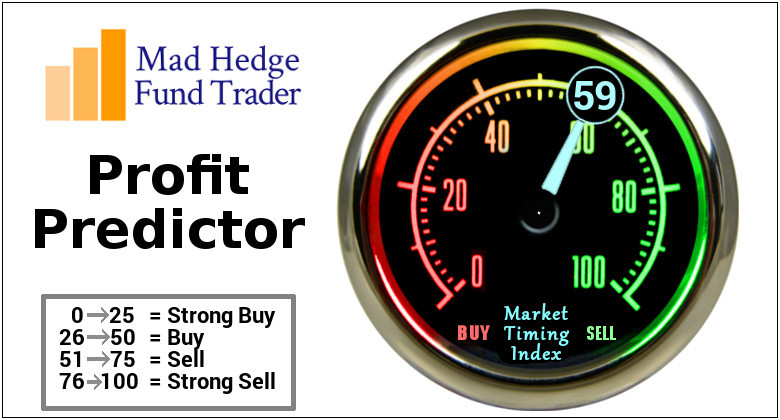
Everyone always needs toilet paper, right?
Wrong. At least stock investors don’t.
Once considered one the safest stock market sectors in which to hide out during bear markets and more recently pandemics, Consumer Staples no longer offer the hideout they once did.
Who needs a hideout anyway now that the Roaring Twenties are on and may make another decade to run.
Take a look at the Consumer Staples Select Sector SPDR ETF (XLP). It’s top five holdings include Proctor & Gamble (PG) (11.13%), Coca-Cola (KO) (10.07%), PepsiCo, Inc. (PEP) (8.7%), Philip Morris (7.80%) (PM), and Walmart (WMT).
Its only remaining attraction is that it has a 30-day SEC yield of 2.67%.
The (XLP) has recently been one of the best performing ETFs. However, costs are rising dramatically, and the bloom is coming off the rose.
In short, the industry is caught in a vice.
In the meantime, ferocious online competition from the likes of Amazon (AMZN) makes it impossible for consumer staples to pass costs on to consumers as they did in past economic cycles.
In fact, the prices for many consumer staples are falling thanks to the world’s most efficient distribution network. And if you are an Amazon Prime member, they will deliver it to your door for free. I just bought a pair of Head Kore 93 skis in Vermont, and they were delivered in two days.
It gets worse. The largest sector of the consumer staples market, the poor and working middle class are seeing the smallest wage gains, the worst layoffs, and the slowest pandemic recovery. Almost all pay increases are now taking place at the top of the wage ladder.
AI specialists and online marketing experts, yes, Safeway checkout clerks and fast food workers, no.
This also will get a lot worse as some 50% of all jobs will disappear over the next 20 years, mostly at the low end.
Blame technology. There is even a robot now that can assemble Ikea furniture. And there goes my side gig!
So, if your friend at the country club locker room tells you it’s time to load up on Consumer Staples because they are cheap, safe, and high-yielding, ignore him, delete his phone number from your contact list, and unfriend him on Facebook.
If anything, the sector is a great “sell short on rallies” candidate.
As I never tire of telling followers, never confuse “gone down a lot” with “cheap.”
Eventually, the sector will fall enough to where it offers value. But that point is not now. There has to be a bottom somewhere.
After all, everyone needs toilet paper, right? Or will a robot soon take over that function as well? They already have in Japan.
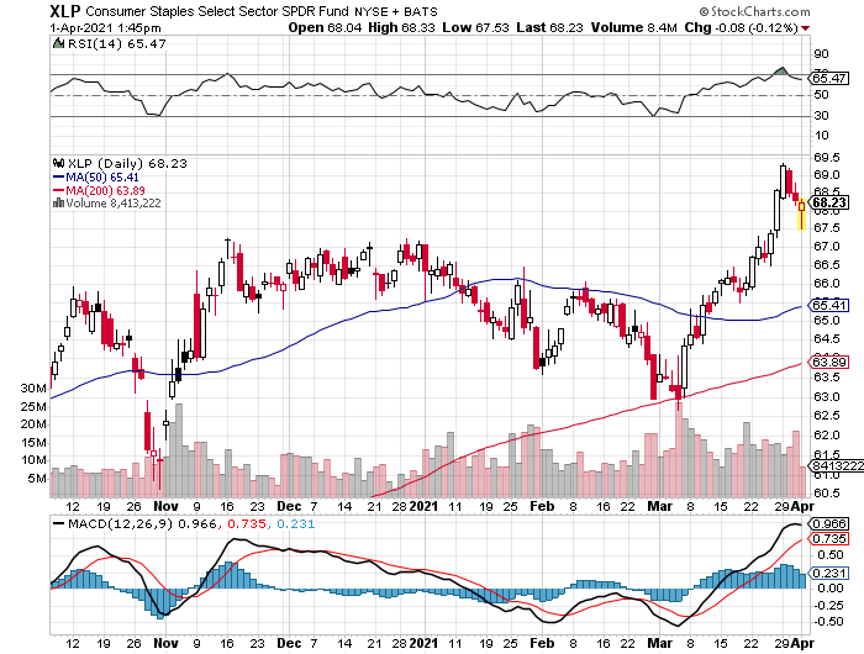
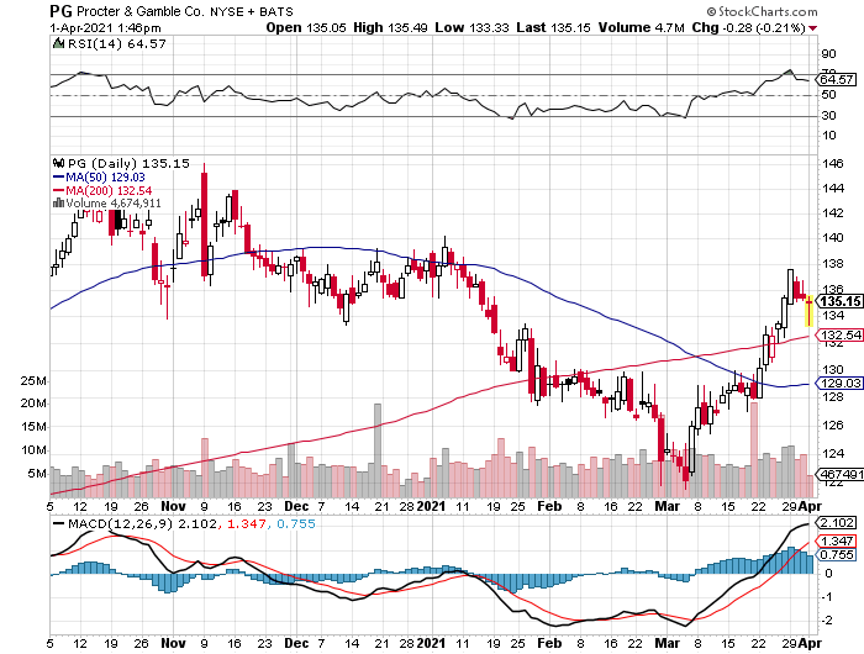
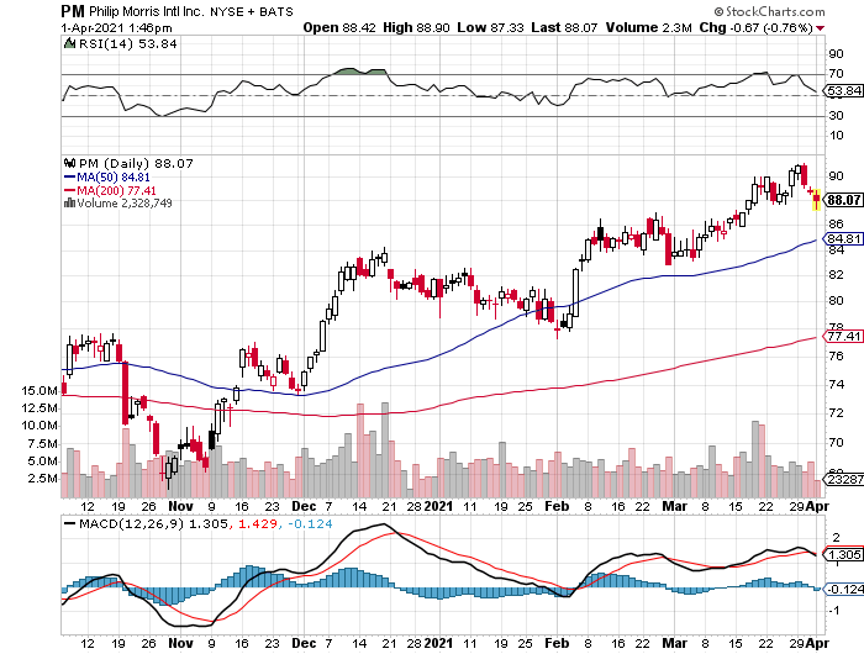
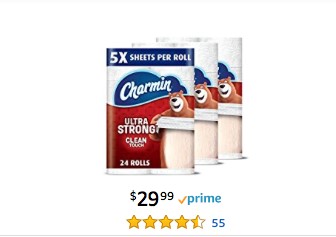
Legal Disclaimer
There is a very high degree of risk involved in trading. Past results are not indicative of future returns. MadHedgeFundTrader.com and all individuals affiliated with this site assume no responsibilities for your trading and investment results. The indicators, strategies, columns, articles and all other features are for educational purposes only and should not be construed as investment advice. Information for futures trading observations are obtained from sources believed to be reliable, but we do not warrant its completeness or accuracy, or warrant any results from the use of the information. Your use of the trading observations is entirely at your own risk and it is your sole responsibility to evaluate the accuracy, completeness and usefulness of the information. You must assess the risk of any trade with your broker and make your own independent decisions regarding any securities mentioned herein. Affiliates of MadHedgeFundTrader.com may have a position or effect transactions in the securities described herein (or options thereon) and/or otherwise employ trading strategies that may be consistent or inconsistent with the provided strategies.
This site uses cookies. By continuing to browse the site, you are agreeing to our use of cookies.
OKLearn moreWe may request cookies to be set on your device. We use cookies to let us know when you visit our websites, how you interact with us, to enrich your user experience, and to customize your relationship with our website.
Click on the different category headings to find out more. You can also change some of your preferences. Note that blocking some types of cookies may impact your experience on our websites and the services we are able to offer.
These cookies are strictly necessary to provide you with services available through our website and to use some of its features.
Because these cookies are strictly necessary to deliver the website, refuseing them will have impact how our site functions. You always can block or delete cookies by changing your browser settings and force blocking all cookies on this website. But this will always prompt you to accept/refuse cookies when revisiting our site.
We fully respect if you want to refuse cookies but to avoid asking you again and again kindly allow us to store a cookie for that. You are free to opt out any time or opt in for other cookies to get a better experience. If you refuse cookies we will remove all set cookies in our domain.
We provide you with a list of stored cookies on your computer in our domain so you can check what we stored. Due to security reasons we are not able to show or modify cookies from other domains. You can check these in your browser security settings.
These cookies collect information that is used either in aggregate form to help us understand how our website is being used or how effective our marketing campaigns are, or to help us customize our website and application for you in order to enhance your experience.
If you do not want that we track your visist to our site you can disable tracking in your browser here:
We also use different external services like Google Webfonts, Google Maps, and external Video providers. Since these providers may collect personal data like your IP address we allow you to block them here. Please be aware that this might heavily reduce the functionality and appearance of our site. Changes will take effect once you reload the page.
Google Webfont Settings:
Google Map Settings:
Vimeo and Youtube video embeds:
